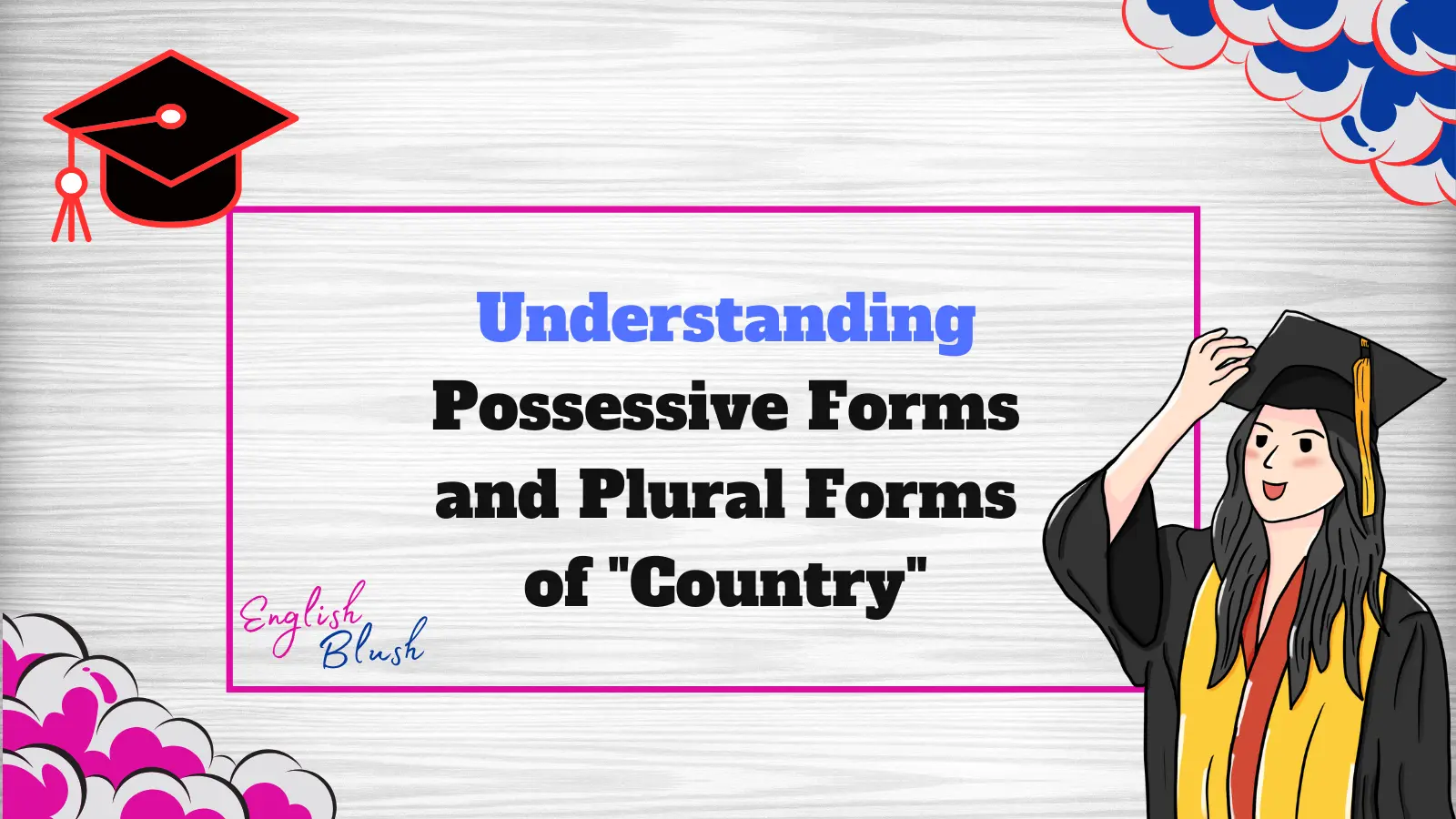In English, words can change depending on whether they are singular or plural, and whether they show ownership. In this article, we will explain the difference between Country’s, Countries’, and Countries with simple examples and a helpful table. By the end, you will clearly understand when and how to use these forms.
What is a Possessive Form?
A possessive form is used to show ownership or something that belongs to someone or something. For example, when we say “The country’s flag,” we mean the flag that belongs to the country.
There are three important forms we will focus on:
- Country’s: Singular possessive (one country).
- Countries’: Plural possessive (more than one country).
- Countries: Plural form (more than one country, no ownership).
Singular Possessive: Country’s
The singular possessive form is used when we are talking about one country and something that belongs to it.
For example:
- The country’s capital (The capital of the country).
- The country’s economy (The economy of the country).
The apostrophe (’) comes after the “s” when we are talking about something that belongs to one country.
Plural Possessive: Countries’
The plural possessive form is used when we talk about more than one country and something that belongs to these countries.
For example:
- The countries’ borders (The borders of many countries).
- The countries’ leaders (The leaders of many countries).
In this case, we add the apostrophe (’) after the “s” because we are referring to more than one country.
Plural: Countries
The plural form countries is simply used when we refer to more than one country but without showing possession.
For example:
- There are many countries in Europe.
- The countries of Asia are diverse.
Notice there is no apostrophe in this form, and we are not talking about something that belongs to the countries.
Quick Comparison Table
| Form | Use | Example Sentences |
|---|---|---|
| Country’s | Singular possessive (one country) | The country’s flag is beautiful. |
| Countries’ | Plural possessive (more than one) | The countries’ governments signed the treaty. |
| Countries | Plural (more than one, no possession) | There are 195 countries in the world. |
Key Points to Remember:
- Country’s shows ownership of something from one country.
- Countries’ shows ownership of something from many countries.
- Countries is just the plural form of country, and it does not show ownership.
Examples to Practice
- The country’s culture is rich and diverse.
- The countries’ languages are different from each other.
- Many countries have different rules for education.
Conclusion
Now that you understand the difference between country’s, countries’, and countries, you can use these forms correctly when talking about ownership or plural countries. By remembering the rules and examples, you’ll feel confident using these words in your sentences.





